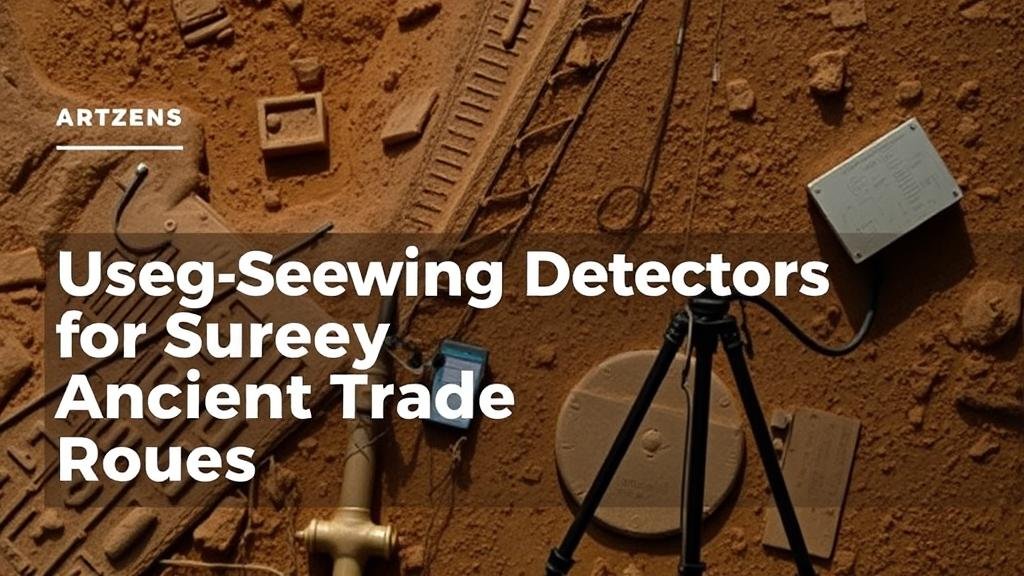Using Deep-Seeking Detectors for Surveying Ancient Trade Routes
Using Deep-Seeking Detectors for Surveying Ancient Trade Routes
Ancient trade routes were critical arteries for economic and cultural exchanges, facilitating the movement of goods, ideas, and innovations across vast distances. In the present day, archaeologists and historians are utilizing advanced technology such as deep-seeking detectors to uncover and analyze these historical pathways, revealing insights into ancient societies. This article explores the application of deep-seeking detectors in surveying ancient trade routes, discussing their functionality, effectiveness, case studies, and broader implications.
Understanding Deep-Seeking Detectors
Deep-seeking detectors are sophisticated geophysical instruments designed to detect metal and non-metal anomalies buried underground. Unlike standard metal detectors, which typically function effectively only at shallow depths, deep-seeking detectors can penetrate several feet into the ground, making them invaluable for archaeological exploration. Such detectors utilize a combination of electromagnetic fields and acoustic waves to identify buried structures and artifacts.
These detectors operate on complex algorithms that differentiate between various materials, allowing archaeologists to distinguish between, for example, ancient coins and geological materials. This level of precision is critical, especially in regions with rich histories of trade and commerce.
Historical Context of Trade Routes
Ancient trade routes, such as the Silk Road and the Incense Route, were not just routes for the transport of goods; they also served as conduits for cultural exchanges. Silk Road facilitated trade between China and Europe, introducing products like silk and spices, while the Incense Route linked Arabia with the Mediterranean, paving the way for the exchange of incense, perfumes, and textiles.
Understanding the layout and features of these routes is essential for historians, who seek to reconstruct the socio-economic interactions between ancient civilizations. By employing deep-seeking detectors, researchers can identify previously unknown settlements, marketplaces, or even roads that were integral to these trade networks.
The Role of Deep-Seeking Detectors in Archaeological Surveys
Using deep-seeking detectors in archaeological surveys offers several advantages:
- Increased efficiency: Traditional excavation methods can be time-consuming and disruptive, but deep-seeking detectors allow for rapid surveying over large areas.
- Data collection: These detectors provide quantifiable data regarding the location, type, and depth of artifacts that can inform subsequent research and excavation strategies.
- Preservation: Non-invasive surveying techniques minimize the impact on the archaeological site, preserving fragile artifacts and ecosystems.
Case Studies of Deep-Seeking Detectors in Action
One notable application of deep-seeking detectors was the survey of the Roman trade routes in the Mediterranean region. Researchers used these detectors in areas previously thought to be devoid of significant artifacts. uncovered hidden infrastructure, including roads and ports, which provided new insights into Roman logistics and commerce.
Another significant example is the work conducted along the Silk Road in Central Asia, where teams deployed deep-seeking technology to locate ancient caravanserais–roadside inns that supported traders traveling long distances. These findings have significantly advanced scholars understanding of trade dynamics and cultural exchanges in ancient times.
Challenges and Limitations
Despite their effectiveness, the use of deep-seeking detectors is not without challenges. Operators must be trained to interpret the data accurately to avoid misidentification of objects. Plus, environmental factors such as soil composition can affect detector performance, sometimes masking potential findings.
Also, the reliance on technology raises questions about the potential neglect of traditional methods. While deep-seeking detectors offer powerful capabilities, they should complement rather than replace established archaeological practices.
The Future of Deep-Seeking Detectors in Archaeology
The advancement of technology continues to enhance the capabilities of deep-seeking detectors. Future developments may include improved sensor technologies and machine learning algorithms that can refine data interpretation. Enhanced integration with GIS (Geographic Information Systems) can also facilitate more comprehensive mapping of ancient trade routes.
As we push the boundaries of our knowledge, the intersection of technology and archaeology presents an exciting frontier for uncovering the mysteries of our past. By using deep-seeking detectors judiciously, researchers can reveal the narratives of ancient trade routes and their impact on the development of civilizations.
Actionable Takeaways
- For researchers, consider the integration of deep-seeking detectors alongside traditional excavation methods to maximize the efficiency and accuracy of archaeological surveys.
- Train professionals and students in geophysical methods and data interpretation to better utilize deep-seeking technologies.
- Encourage interdisciplinary collaboration between archaeologists, historians, and technologists to continue evolving surveying techniques and models.
To wrap up, deep-seeking detectors represent a significant advancement in the archaeological toolkit for surveying ancient trade routes. Their ability to uncover hidden artifacts and structures enables a richer understanding of historical trade networks, which are vital for comprehending the socio-economic fabric of ancient civilizations.



